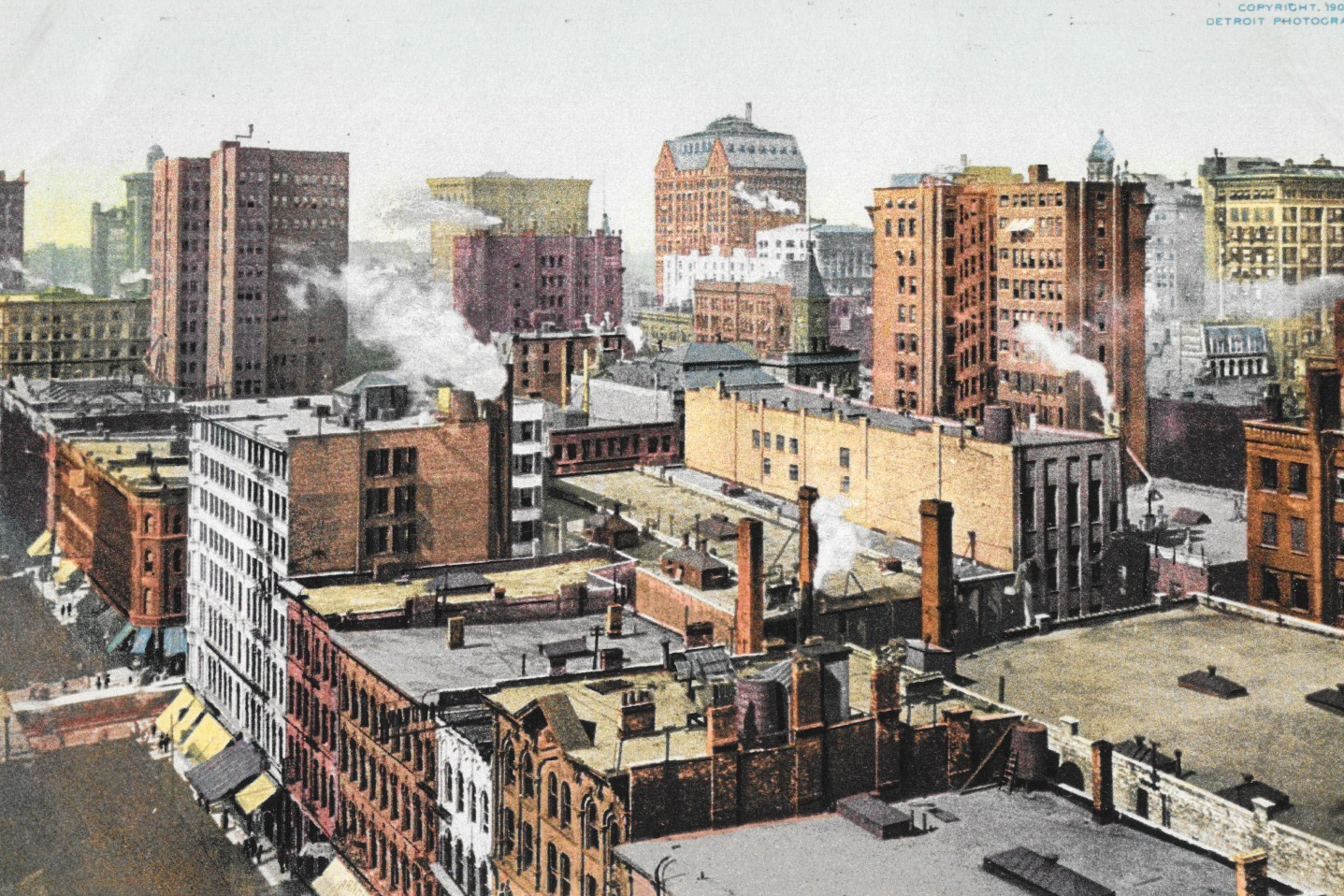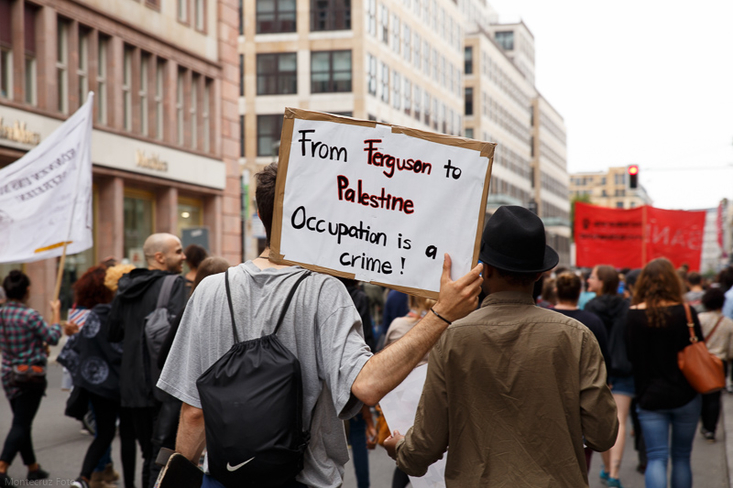This story is part of a joint series by The Forge and Prism. Read the rest of the series, Organizing, Innovation, and Upheaval, here.
We have all spent the bulk of this year at home, yet law enforcement has managed to kill more people from January 1-June 30, 2020 than they did during that same period in the past five years. As healthcare and other frontline workers fight to obtain personal protective equipment and medical supplies, police officers across the country — fully equipped with PPE, tear gas, batons, and tanks — attack protesters who continue to demand that “Black Lives Matter.”
But society is catching on, framing COVID-19 and structural racism as intersecting pandemics — which makes the debut of From Enforcers to Guardians: A Public Health Primer on Ending Police Violence right on time. As ethnographic researchers and artists, we appreciate that the book, written by Drs. Hannah Cooper and Mindy Thompson Fullilove, begins and ends with a poem: Ross Gay’s poignant meditation about Eric Garner (may he rest in power!) and his work in the NYC Horticultural Department, “making it easier/for us to breathe.”
Noting the field’s lag in responding to police violence as a public health issue, Cooper and Fullilove have written this book as a “primer” for students, community-based organizations, public health departments, and researchers. We also see the book as an important resource for organizers to study, interrogate, and expand upon public health’s growing work around police violence. There are no effective public health solutions without the involvement of organizers and the communities they serve.
Part I of the book offers a historical analysis of “distorted policing” — the reality that marginalized groups experience a different kind of policing than wealthy white people do, marked as it is by abuse and neglect. Cooper and Fullilove assert that police, from their inception, have been the “enforcers” of state power to protect white elites through the systemic oppression of marginalized groups. They begin the story of policing with the Peeler Police in Ireland in the 1800s. The Peace Preservation Force (“the Peelers”) were modeled after the British military forces who occupied Ireland for over 300 years; the police force was designed explicitly to protect the political, civil, and social systems of subordination that maintained British and Protestant control. Beginning here establishes the roots of policing as an occupying, paramilitary force (recruits were English or Anglo-Irish) and as a mechanism of social control.
The book goes on to discuss slave patrols, also known as “paddy rollers,” the first, formal state-sponsored police force in the U.S. Beginning in Charleston, South Carolina, in 1704, slave patrols were organized groups of white men who policed Black people — enslaved people, fugitives, those pejoratively labeled as “truant,” as well as free Black people. The patrollers’ role in criminalizing Blackness persisted in the Reconstruction and Jim Crow eras with the formation and proliferation of the Ku Klux Klan, which many officers joined. The KKK’s violent practice of lynching was an early iteration of “justifiable” homicide in this country.
Cooper and Fullilove only give scant attention to state-sanctioned violence during the Civil Rights Movement, including the quelling of resistance efforts by state actors. One oversight, as noted by Dr. Mary T. Bassett, is their failure to mention the Black Panther Party, a group which was formed in large part to challenge violent policing in Black communities and which went on to face violent suppression by the FBI. The authors instead devote most of this section to the “War on Drugs.” They detail how modern distorted policing, with stop-and-frisk and SWAT teams, has become highly violent and militarized. Many would argue that these tactics have led to the phenomenon of mass incarceration, but this is only quickly mentioned in the book.
With this omission, Cooper and Fullilove fail to fully recognize the scope of systemic violence inflicted upon communities of color, allowing policing and mass incarceration to be seen as distinct problems which require different solutions. In a recent Allied Media Conference plenary session, longtime organizer and co-founder of Critical Resistance Rachel Herzing reminds us to connect the multiple systems of policing in organizing efforts — “cops, cages, cameras, and courts” are the resources, technologies, and spaces that comprise the prison-industrial complex and cause irreparable harm.
Part II of the book focuses on measuring distorted policing. In particular, this section focuses on pattern or practice investigations conducted by the Department of Justice, considered the most robust investigations into police violence. These investigations amass a huge amount of data, from interviews and observational data, to incident reports, to training and management procedures.
DOJ investigations have revealed four broad categories of systemic patterns of violence: physical violence (with and without a weapon), psychological violence, sexual violence, and neglectful violence. These forms of violence fall hardest on people of color, people with mental illness, youth, and gender non-conforming individuals. Cooper and Fullilove cite the importance of these investigations — in contrast to current public health research in this area — because of the immense amount of data they contain and because they are a mechanism of internal reform within the criminal justice system.
While the DOJ investigations remain focused on the impact of police (mis)behavior on the efficacy of policing, we argue that public health research has a different and important role to play. The scope of growing public health research — from attention to community contexts to the ways violence is compounded — offers a critical perspective from which to build substantive future action outside of a criminal justice framework.
Part III of the book focuses on the concept of guardianship. In December 2014, President Obama convened the Task Force on 21st Century Policing to restore trust between communities and law enforcement nationwide, though the Task Force was overwhelmingly comprised of law enforcement and lawyers. In 2015, the Task Force conducted seven listening sessions with a diverse set of stakeholders and offered key recommendations. Copper and Fullilove situate the Task Force as a “way forward,” but the recommendations’ overreliance on hiring more diverse officers, mandating body cameras, offering implicit bias trainings, and supporting community policing lack significant and sustained results. These recommendations assume that policing is a system that just needs fixing when, in fact, policing is working exactly as it was intended: to control people of color, girls and women, immigrant populations, mentally ill individuals, those who are housing insecure, differently abled people, queer and trans folks, and sex workers. These communities are not made safe(r) by police; in fact they remain overpoliced and underprotected.
Enforcers to Guardians is an important intervention for the public health field. The book begins to acknowledge our complicity in supporting systems that maintain marginalization while identifying the multi-scale, multi-system approaches needed to combat police violence. Cooper and Fullilove end the book by offering what they call a “magic strategy” to move policing towards guardianship for all communities. Central to these strategies, though not explicitly discussed, is the work of organizers and communities who have been working for decades to heal trauma, build resources, and fight marginality.
As Cooper and Fullilove frame the book’s overall analysis within the context of “American Apartheid capitalism,” we wonder if “guardianship” is an appropriate frame. Instead, the book can invite further transformative thinking and action beyond reforms. The last few months have begun to illuminate and amplify movement work against police violence that has already been going on in communities across the country. While we are in this national moment of reckoning, we must work not just to interrogate the “enforcers” but to defund and divest from them.
We see the book as a launching pad to ignite courageous conversations, critical interventions, social action, and policymaking. Specifically, we must listen to and follow organizers and communities who are working to prioritize transparent data collection and dissemination regarding law enforcement violence, end the presence of police in schools, demand budget justice in our cities, decriminalize activities of survival, and fund and support restorative and transformative justice approaches and interventions. Because our communities are indeed reimagining safety and fostering healing for ourselves and for our futures.







Become a Sustaining Donor to The Forge!
The Forge is built by and for organizers. Though we’ve raised a bit of startup money to build the site, this publication and community will be only as strong as we, together, make it.
Please click below to become a sustainer. When we have some cool swag, you’ll be first in line!
DonateRelated Articles
How Cultural Strategy Drives Long-Term Change
How to Build a New World, Locally
Ferguson, Palestine and “The Most Important Election of Our Lifetime”
Will the Revolution Be Funded?
Get the latest articles sent to your inbox